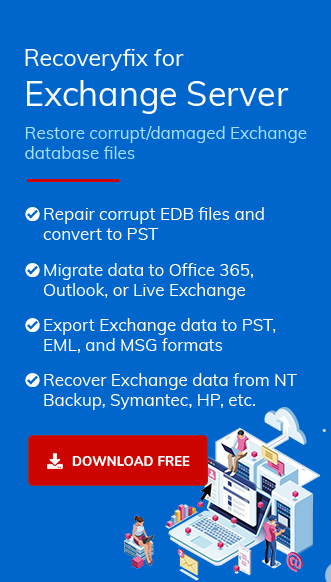The Exchange Admin Centre manages the Exchange using the modern-day web-based management console in updated versions of the Exchange Server. It replaces the ECP to manage the email settings and enhances the admin experience of Microsoft 365 in the organization.
However, when the user tries to access the Exchange control panel or migrate to the updated version of the Exchange 2019 Server, a message “Could not load file assembly” occurs. This issue mainly occurs after the Exchange updates, which restrict ongoing Exchange communication.
The user faces the following error messages mentioned below while accessing EAC after the Exchange update is discussed here:
Parser Error prompt: Could not load file or assembly ‘Microsoft.Exchange.HttpRedirectModules, Version=15.0.0.0, Culture=neutral, PublicKeyToken=31bf3856ad364e35’ or one of its dependencies. The system cannot find the file specified.
Source File: C:\inetpub\wwwroot\web.config Line: 38
Assembly Load Trace: The following information can be helpful to determine why the assembly ‘Microsoft.Exchange.HttpRedirectModules, Version=15.0.0.0, Culture=neutral, PublicKeyToken=31bf3856ad364e35’ could not be loaded.
Now, we’ll go through the ways to resolve this ECP issue of the new Exchange Server 2019.
Ways to fix ‘Cannot access ECP on new exchange 2019 server’ issue
In the above section, we’ve understood the issue that creates complexities in the access of ECP in the updated Exchange Server. Now, we’ll fix this issue by different conditions which required to be satisfied are mentioned below:
- Check Outlook web access
When a user installs a security update on a Microsoft Exchange Server, then either Outlook on the Web (OWA) or Exchange Control Panel (ECP) or both applications stop working on the server.
OWA displays the following error message:Something went wrong. Your request couldn’t be completed. HTTP Status code: 500
It is essential to verify that your OWA is working fine. If this is validated, then there may be a problem with Exchange admin control. - Access to other browsers and accounts
You should try to access the Exchange admin centre with other admin accounts on different web browsers and local servers in your organization. It will clarify whether the issue occurs in a single account or your organization’s EAC account.
- Recreate the virtual directory
If you are migrating your data from Exchange 2013 to Exchange 2019, then there is a possibility that the administrator mailbox will not be migrated. Creating a virtual directory can fix this issue but can put you in the worst state. Follow the below Power Shell command to recreate the virtual directory:
- Use the command below to get information on the current ECP site.
Get-EcpVirtualDirectory -Server “<server name>” | Format-List Server, Name, InternalUrl, ExternalUrl, Identity
- Use the command below to remove the ECP directory.
Remove-EcpVirtualDirectory -Identity “<ecp site identity>” -Confirm:$false
- Use the command below to recreate the ECP site.
New-EcpVirtualDirectory -Server “<server name>” -InternalUrl “<internal ecp url>” -ExternalUrl “<external ecp url>”
- Use the command below to get information on the current ECP site.
In resolution, manual methods are not very efficient because manual methods may create the risk of data loss and access issues. Use Recoveryfix for Exchange Server, a specially designed tool to recover and restore your entire database with EDB files. This tool also facilitates exporting or repairing public folders, archive mailboxes and fixes all kinds of exchange-related errors and issues like LDAP server issues, database mounting issues, etc.
- Recover multiple mailboxes of Exchange Server EDB files to PST format.
- Creates separate Outlook PST files for each mailbox.
- Supports migration to Exchange Mailbox, Office 365, and public folders.
- Retrieves the mailbox folders in a perfect tree-like structure.
- Recover the entire deleted mailbox in case of failure or crash.
Conclusion
The above sections contain the different commands and conditions that may efficiently resolve the access issue in the Exchange admin control on the new Exchange 2019. Still, if you cannot get access, it is suggested to use Recoveryfix for Exchange Server software to restore the Exchange database. Now, recreate a new Exchange server using this tool to perform functionalities and overall productivity with updated features like the previous version.


